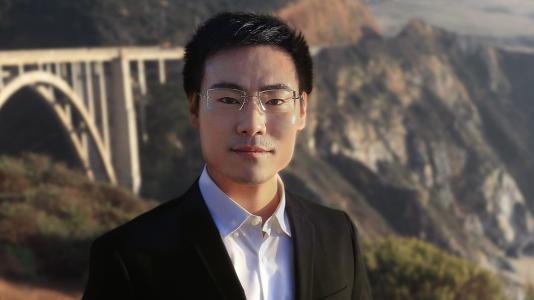
Qilin Guo, a Ph.D. candidate at the University of Wisconsin-Madison, was named the 2022 recipient of the Rosalind Franklin Young Investigator Award.
This biannual award is given by the Advanced Photon Source (APS) user organization. It recognizes important scientific or technical accomplishments at (or beneficial to) the APS by a young investigator, typically a senior graduate student or early career researcher. The APS is a Department of Energy (DOE) Office of Science user facility located at DOE’s Argonne National Laboratory.
The award is named for Rosalind Franklin, a chemist who played a critical, but largely unacknowledged role in the discovery of the structure of DNA.
“The APS has been my other academic home during my entire Ph.D. study. My achievements greatly benefit from the excellent researchers and the world-class facilities there.” – Qilin Guo, University of Wisconsin-Madison.
Guo, whose research revealed process dynamics in three major aspects of the laser powder bed fusion additive manufacturing process, was nominated for the award by his Ph.D. advisor Lianyi Chen. Chen is the Charles Ringrose Assistant Professor and a fellow of the Grainger Institute for Engineering at the University of Wisconsin-Madison. In his remarks, Chen lauded Guo as one of the pioneers of “using synchrotron-based in situ X-ray imaging and diffraction to study the physical dynamics of metal additive manufacturing process.”
“I feel truly honored to receive this award,” said Guo. “The APS has been my other academic home during my entire Ph.D. study. My achievements greatly benefit from the excellent researchers and the world-class facilities there. Having my work recognized in this way is really a proud moment for me and my entire team.”
Guo’s findings related to powder spattering, melt pool evolution, melt flow evolution and solidification dynamics have the potential to transform the metal additive manufacturing industry. His work may help manufacturers design better machines and help part manufacturers make higher quality parts. It may also help feedstock material producers design and develop better metal powders and help reduce the level of effort required for qualification of components.
Guo conducted his research using APS beamlines 1-ID, 11-ID and 32-ID-B.
A Ph.D. candidate in Mechanical Engineering at the University of Wisconsin-Madison, Guo previously conducted graduate research at Missouri University of Science and Technology. He earned his Bachelor of Science degree and Master of Science degree from Harbin Institute of Technology in China.
About the Advanced Photon Source
The U. S. Department of Energy Office of Science’s Advanced Photon Source (APS) at Argonne National Laboratory is one of the world’s most productive X-ray light source facilities. The APS provides high-brightness X-ray beams to a diverse community of researchers in materials science, chemistry, condensed matter physics, the life and environmental sciences, and applied research. These X-rays are ideally suited for explorations of materials and biological structures; elemental distribution; chemical, magnetic, electronic states; and a wide range of technologically important engineering systems from batteries to fuel injector sprays, all of which are the foundations of our nation’s economic, technological, and physical well-being. Each year, more than 5,000 researchers use the APS to produce over 2,000 publications detailing impactful discoveries, and solve more vital biological protein structures than users of any other X-ray light source research facility. APS scientists and engineers innovate technology that is at the heart of advancing accelerator and light-source operations. This includes the insertion devices that produce extreme-brightness X-rays prized by researchers, lenses that focus the X-rays down to a few nanometers, instrumentation that maximizes the way the X-rays interact with samples being studied, and software that gathers and manages the massive quantity of data resulting from discovery research at the APS.
This research used resources of the Advanced Photon Source, a U.S. DOE Office of Science User Facility operated for the DOE Office of Science by Argonne National Laboratory under Contract No. DE-AC02-06CH11357.
Argonne National Laboratory seeks solutions to pressing national problems in science and technology. The nation’s first national laboratory, Argonne conducts leading-edge basic and applied scientific research in virtually every scientific discipline. Argonne researchers work closely with researchers from hundreds of companies, universities, and federal, state and municipal agencies to help them solve their specific problems, advance America’s scientific leadership and prepare the nation for a better future. With employees from more than 60 nations, Argonne is managed by UChicago Argonne, LLC for the U.S. Department of Energy’s Office of Science.
The U.S. Department of Energy’s Office of Science is the single largest supporter of basic research in the physical sciences in the United States and is working to address some of the most pressing challenges of our time. For more information, visit https://energy.gov/science.